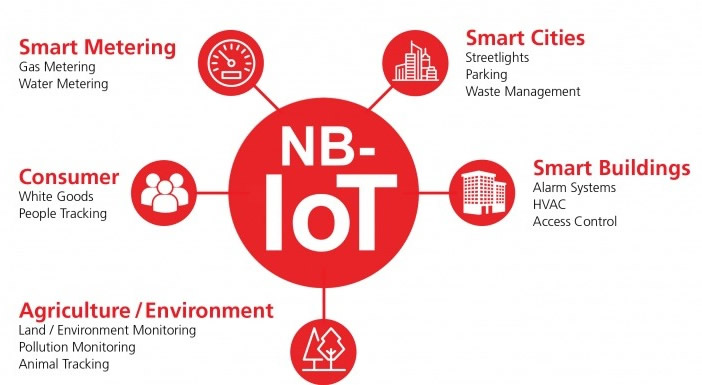Narrowband‑IoT: Reaching the devices other technologies cannot
The Internet of Things (IoT) promises us a more connected, smarter world, but also presents a new set of technical challenges including which technology to pick for which use case.
By Simon Glassman, Senior Principal, Strategic Partnerships, u-blox.
The popular wireless communications methods include WiFi, BLE and LTE but for those devices that are located in remote or hard to reach areas, one technology in particular is emerging that addresses the challenges of poor signal strength and range limitations. NarrowBand IoT (NB‑IoT), also termed LTE Cat. NB1, is a new radio frequency standard that meets the use case constraints of low cost, long battery life and providing reliable operation in poor signal locations.

IoT in the real world
Narrowband isn’t just a concept; it’s already been deployed, in 3GPP pre‑standard form, in the historic city of Valencia, Spain. Every Valencia water customer has a meter to measure usage and there are more than 1.1 million of them. Reading them is a daunting data collection task that imposes huge manpower costs. Local utility, Aguas de Valencia, has been extremely keen on automating meter reading, but had been unable to turn dream into reality due to the cost of cellular data, high power consumption requiring regular battery changes and poor signal environments indoors. Having heard about NB‑IoT, they conducted a trial with u‑blox, Vodafone and Huawei using u‑blox NB‑IoT modules built into test mobile units located in water meter locations. Meters tend to be located in pretty inaccessible places within buildings, most of them underground in basements, representing a challenging environment for any radio signal.
NB‑IoT was found to be an ideal solution because it offers just the right combination of features. The lower‑frequency narrowband signals have a long range measured in kilometers and offer excellent penetration characteristics of walls, earth and metal conduits. The radio modules are cost effective and simple with power consumption low enough to provide 10+ years of battery life in typical applications. NB‑IoT has relatively low data throughput, measured in tens of kbps, which is tailored to many low bandwidth IoT applications, such as water meters. u‑blox worked with technology partners Vodafone and Huawei to make the trial a success.
Other recent examples of u‑blox NB‑IoT partnership initiatives include two smart parking trials - one with Deutsche Telekom and Huawei, the other with Fangle Technology on China’s Unicom network.
The world's first NB‑IoT LTE Cat. NB1 (3GPP Release 13) compliant module is u‑blox’s SARA‑N2. Measuring just 16x26mm, it is optimised for poor coverage applications, even underground and is designed to operate between 10 and 20 years on a single‑cell primary battery. Peak download data rates of up to 227kb/s can be achieved, while the peak upload data rate is 21kb/s. SARA‑N2 is designed to support three cellular RF bands simultaneously, suitable for wide geographic coverage. u‑blox nested design architecture allows customers to quickly and easily migrate from existing 2G and 3G modules to NB‑IoT, while enabling future‑proof, seamless mechanical scalability across technologies.
Apart from offering lower device complexity and ultra‑low power operation when compared to conventional cellular radio technologies, NB‑IoT can support up to 150,000 devices per cellular cell. NB‑IoT also provides greater security and freedom from interference, since it uses licensed cellular network spectrum unlike other Low‑Power Wide Area (LPWA) solutions that are using unlicensed spectrum.
Getting started with narrowband IoT
u‑blox has been involved in early stage trials and proof of concepts for Narrowband IoT, covering a range of use cases. Looking ahead we envision a host of new applications for NB‑IoT including automating building and home operations, controlling street lighting, determining when waste bins need emptying, and identifying free parking spaces to name just a few. Further, large‑scale NB‑IoT deployments can be tied into cloud analytics platforms, providing valuable insights for a wide variety of industries and applications.











